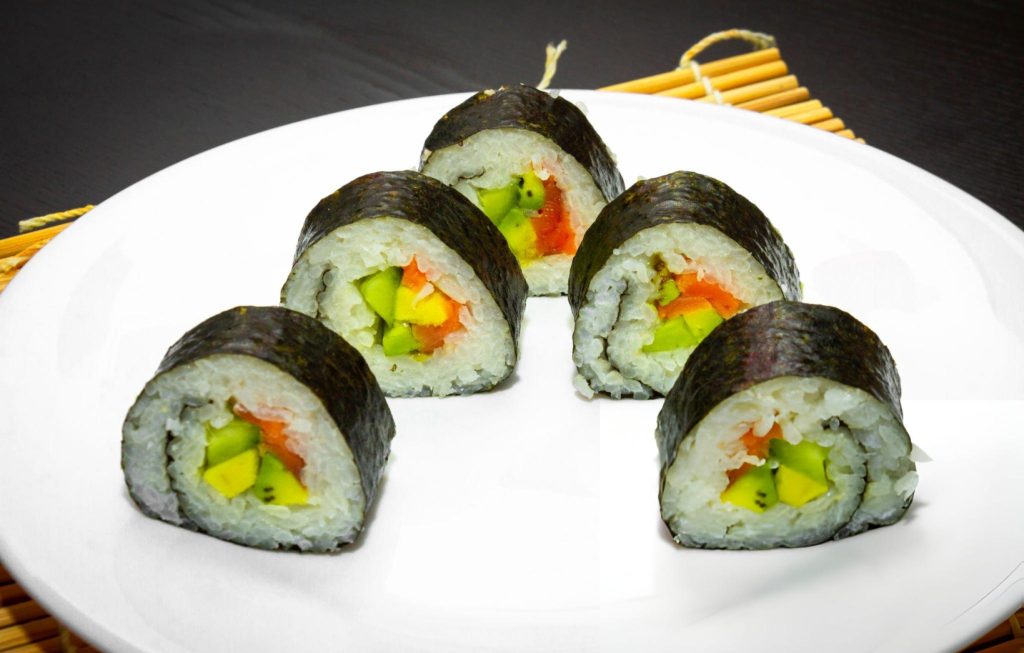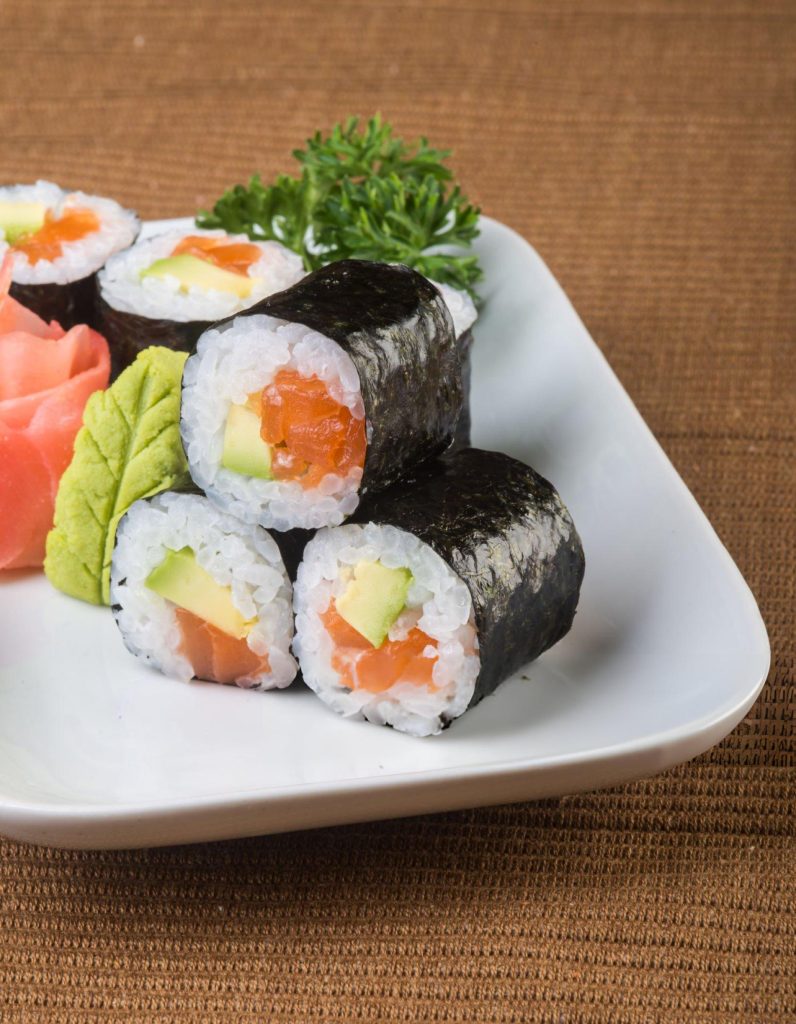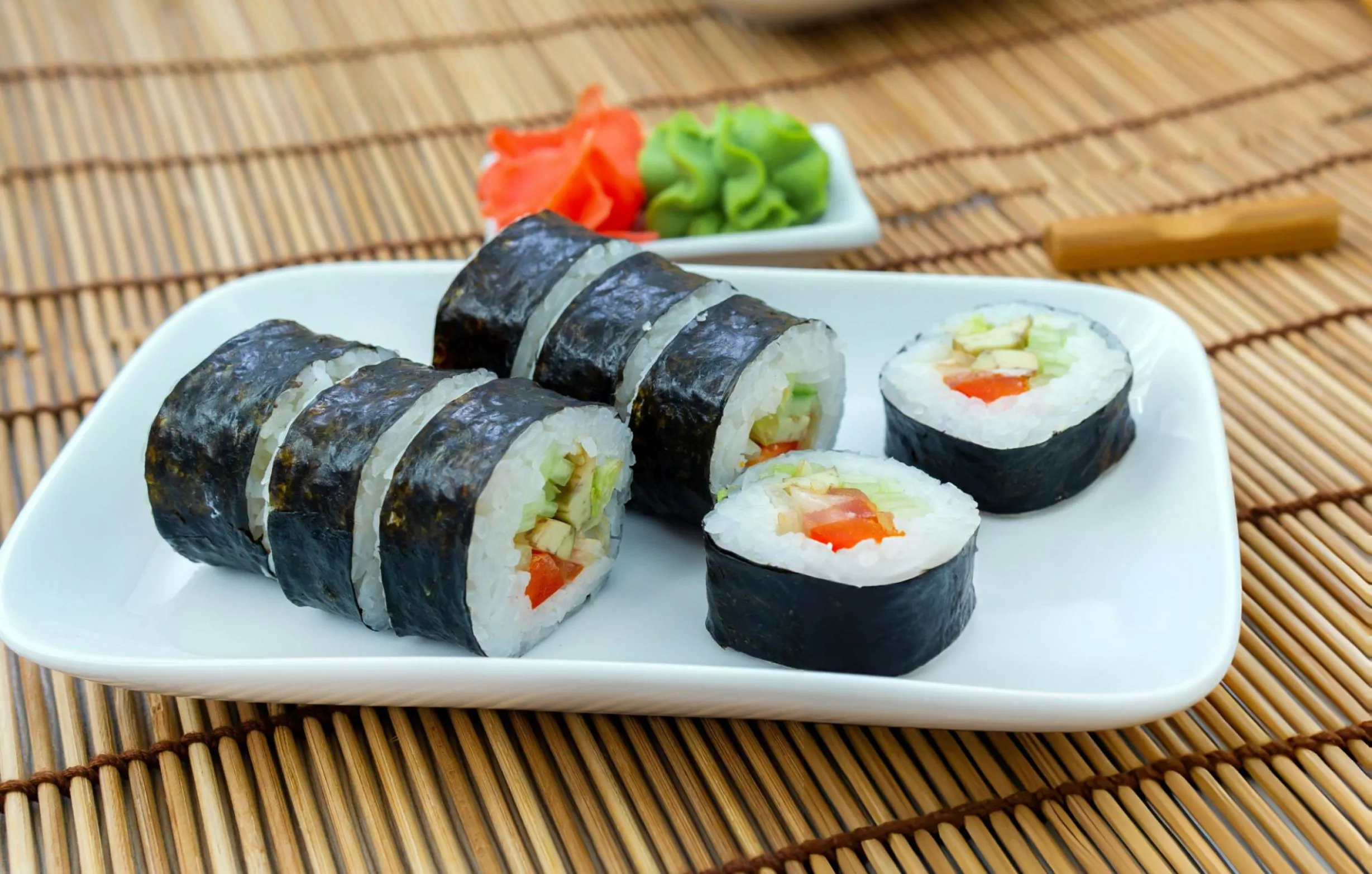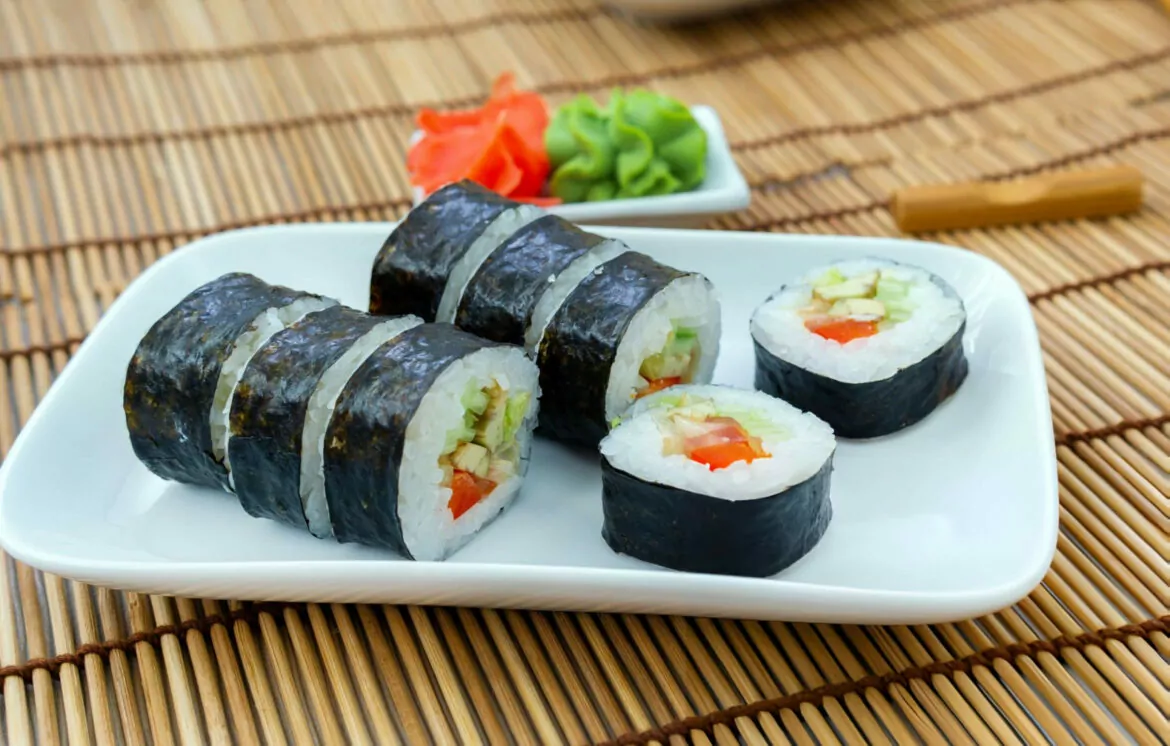Creating sushi at home is not only a culinary adventure but also a chance to bring a piece of Japan’s artful dining culture to your table. This sushi aesthetic recipe offers a blend of vibrant colors, fresh ingredients, and a simple yet elegant preparation process that anyone can master. It’s perfect for impressing guests or simply enjoying a homemade Japanese-inspired meal with a unique twist. Each roll brings a balance of flavors and textures, from the crisp cucumber to the creamy avocado, all encased in a thin layer of toasted nori.

Ingredients Overview
The success of any sushi recipe hinges on the quality of its ingredients. For this recipe, the essentials include nori seaweed sheets, short-grain white rice, imitation crabmeat, avocado, cucumber, and pickled ginger. Freshness is key—ensure the avocado is perfectly ripe, the cucumber crisp, and the crabmeat flaked to perfection. The balance of sweet, sour, and salty flavors from the rice vinegar, sugar, and salt mixture is what gives sushi rice its signature taste. If you’re looking to switch things up, you can substitute the imitation crabmeat with fresh crab or even smoked salmon. For those seeking a vegetarian option, tofu or marinated mushrooms make excellent alternatives.
Step-by-Step Preparation
Making sushi at home can feel daunting at first, but breaking the process down into manageable steps makes it accessible and fun.
Cooking the Rice:
The foundation of any great sushi roll is the rice. Opt for short-grain rice, as its stickiness is essential for holding the sushi together. Bring water to a boil, add the rice, and let it simmer under low heat until the water is absorbed. Keep the pot covered to trap steam, allowing the rice to cook evenly. Once done, gently fold in the rice vinegar, sugar, and salt mixture. This adds the subtle tangy sweetness that sushi rice is known for, and ensures each grain is perfectly seasoned.
Preparing the Nori and Filling:
Lightly toasting the nori sheets in the oven for a minute or two enhances their texture, giving them a gentle crispness. This makes them easier to roll and gives them a satisfying crunch. Meanwhile, prepare your fillings. Slice the avocado and cucumber into thin, even strips to ensure a consistent bite in every piece of sushi. Flake the imitation crabmeat into delicate pieces, which will nestle beautifully within the rice.
Rolling the Sushi:
Rolling sushi is where precision meets creativity. Lay your toasted nori sheet on a bamboo sushi mat, which helps guide the roll into its classic cylindrical shape. Wet your hands to prevent the rice from sticking and spread a thin, even layer over the nori. Add a line of the prepared fillings down the center, then gently lift one edge of the mat, rolling it tightly over the ingredients. The goal is to create a compact, firm roll that holds its shape when sliced.

Recipe Tips
Rice Texture:
Achieving the perfect consistency in your sushi rice is crucial. The grains should be sticky enough to hold together but not so mushy that they lose their integrity. Avoid overcooking the rice by keeping a close eye on the simmering process and fluffing it gently with a fork once it’s done.
Using Wet Hands:
Keep a small bowl of water nearby to dampen your hands before handling the rice. This prevents it from sticking to your fingers and helps you spread it smoothly over the nori sheet.
Knife Sharpness:
A sharp knife is essential for clean, precise cuts. A dull blade will crush the sushi roll rather than slicing through it. Wetting the knife slightly before each cut can also prevent the rice from sticking to the blade.
Sushi Presentation:
For a visually appealing presentation, arrange the sushi pieces neatly on a plate, garnish with a sprinkle of sesame seeds, or place a dollop of wasabi next to each piece. The vibrant greens of the avocado and cucumber contrast beautifully with the white rice and dark nori, creating a dish that is as visually pleasing as it is delicious.
What to Serve With This Recipe
Pair your homemade sushi with classic accompaniments to elevate the dining experience. Miso soup is a perfect starter, with its warm, savory broth providing a comforting contrast to the cool sushi rolls. A small dish of soy sauce is essential for dipping, while pickled ginger cleanses the palate between bites. For an extra kick, serve with a side of wasabi or spicy mayo. To round out the meal, a cup of green tea or chilled sake complements the subtle flavors of the sushi, making it a complete Japanese-inspired dining experience.
Frequently Asked Questions
Can I Use Other Proteins?
Absolutely. If imitation crabmeat isn’t your preference, try using fresh crab, smoked salmon, or even tempura shrimp. For a vegetarian option, marinated tofu, roasted sweet potatoes, or grilled mushrooms can add delicious texture and flavor.
How Long Can I Store the Sushi?
Sushi is best enjoyed fresh, but if you need to store it, wrap each roll tightly in plastic wrap and refrigerate. It should stay fresh for up to 24 hours. Keep in mind that the texture of the rice and nori may change slightly after refrigeration.
Can I Make This Without a Bamboo Mat?
If you don’t have a bamboo sushi mat, you can use a clean kitchen towel or even a sheet of parchment paper. The key is to use something flexible that will help you roll the sushi tightly.
Variations of the Recipe
Sushi is a highly customizable dish, and you can experiment with different fillings to create unique flavor combinations. Add shrimp tempura for a crispy texture or spice things up with a tuna and sriracha mixture. Vegetarians can load up their rolls with a variety of vegetables like bell peppers, carrots, and roasted eggplant. For a fun twist, try using black rice or quinoa as a base for your sushi instead of traditional white rice. Each variation offers a new take on this classic Japanese dish, making it endlessly adaptable to different tastes and dietary needs.
Serving Suggestions
Making sushi at home is a rewarding and creative experience that allows you to experiment with different ingredients and techniques. It’s the perfect dish for a quiet night in or for entertaining guests who appreciate both flavor and presentation. Don’t be afraid to get creative with the fillings and try new combinations—the beauty of sushi lies in its versatility. Whether served as part of a multi-course Japanese meal or enjoyed on its own, this sushi aesthetic recipe is sure to impress and delight.

Ingredients
4 sheets nori seaweed
⅔ cup uncooked short-grain white rice
1 ⅓ cups water
½ pound imitation crabmeat, flaked
1 avocado, peeled, pitted, and sliced
½ cucumber, peeled, and sliced into thin strips
3 tablespoons rice vinegar
3 tablespoons white sugar
1 ½ teaspoons salt
2 tablespoons pickled ginger
Instructions
Start by gathering all your ingredients and preheating your oven to 300°F (150°C).
In a medium-sized pot, bring the water to a rolling boil, then add the rice. Lower the heat to medium-low, cover the pot, and let the rice simmer until fully cooked and all the water is absorbed, about 20 to 25 minutes.
While the rice is cooking, combine the rice vinegar, sugar, and salt in a small bowl. Once the rice is done, gently mix the vinegar mixture into the warm rice, ensuring the grains are well-coated. Set aside to cool slightly.
Place the nori sheets on a baking sheet, and warm them in the preheated oven for 1 to 2 minutes.
Lay one sheet of nori on a bamboo sushi mat. With dampened hands, spread a thin, even layer of rice across the surface of the nori.
Along the center of the rice, arrange a portion of the crabmeat, avocado slices, cucumber strips, and pickled ginger.
Starting from one edge, use the sushi mat to tightly roll the nori over the filling, forming a compact sushi roll. Repeat the process with the remaining nori sheets and ingredients.
Finally, with a wet, sharp knife, slice each roll into 4 to 6 even pieces. Serve and enjoy!

Sushi Recipe
Ingredients
- 4 sheets nori seaweed
- ⅔ cup uncooked short-grain white rice
- 1 ⅓ cups water
- ½ pound imitation crabmeat flaked
- 1 avocado peeled, pitted, and sliced
- ½ cucumber peeled, and sliced into thin strips
- 3 tablespoons rice vinegar
- 3 tablespoons white sugar
- 1 ½ teaspoons salt
- 2 tablespoons pickled ginger
Instructions
- Start by gathering all your ingredients and preheating your oven to 300°F (150°C).
- In a medium-sized pot, bring the water to a rolling boil, then add the rice. Lower the heat to medium-low, cover the pot, and let the rice simmer until fully cooked and all the water is absorbed, about 20 to 25 minutes.
- While the rice is cooking, combine the rice vinegar, sugar, and salt in a small bowl. Once the rice is done, gently mix the vinegar mixture into the warm rice, ensuring the grains are well-coated. Set aside to cool slightly.
- Place the nori sheets on a baking sheet, and warm them in the preheated oven for 1 to 2 minutes.
- Lay one sheet of nori on a bamboo sushi mat. With dampened hands, spread a thin, even layer of rice across the surface of the nori.
- Along the center of the rice, arrange a portion of the crabmeat, avocado slices, cucumber strips, and pickled ginger.
- Starting from one edge, use the sushi mat to tightly roll the nori over the filling, forming a compact sushi roll. Repeat the process with the remaining nori sheets and ingredients.
- Finally, with a wet, sharp knife, slice each roll into 4 to 6 even pieces. Serve and enjoy!



